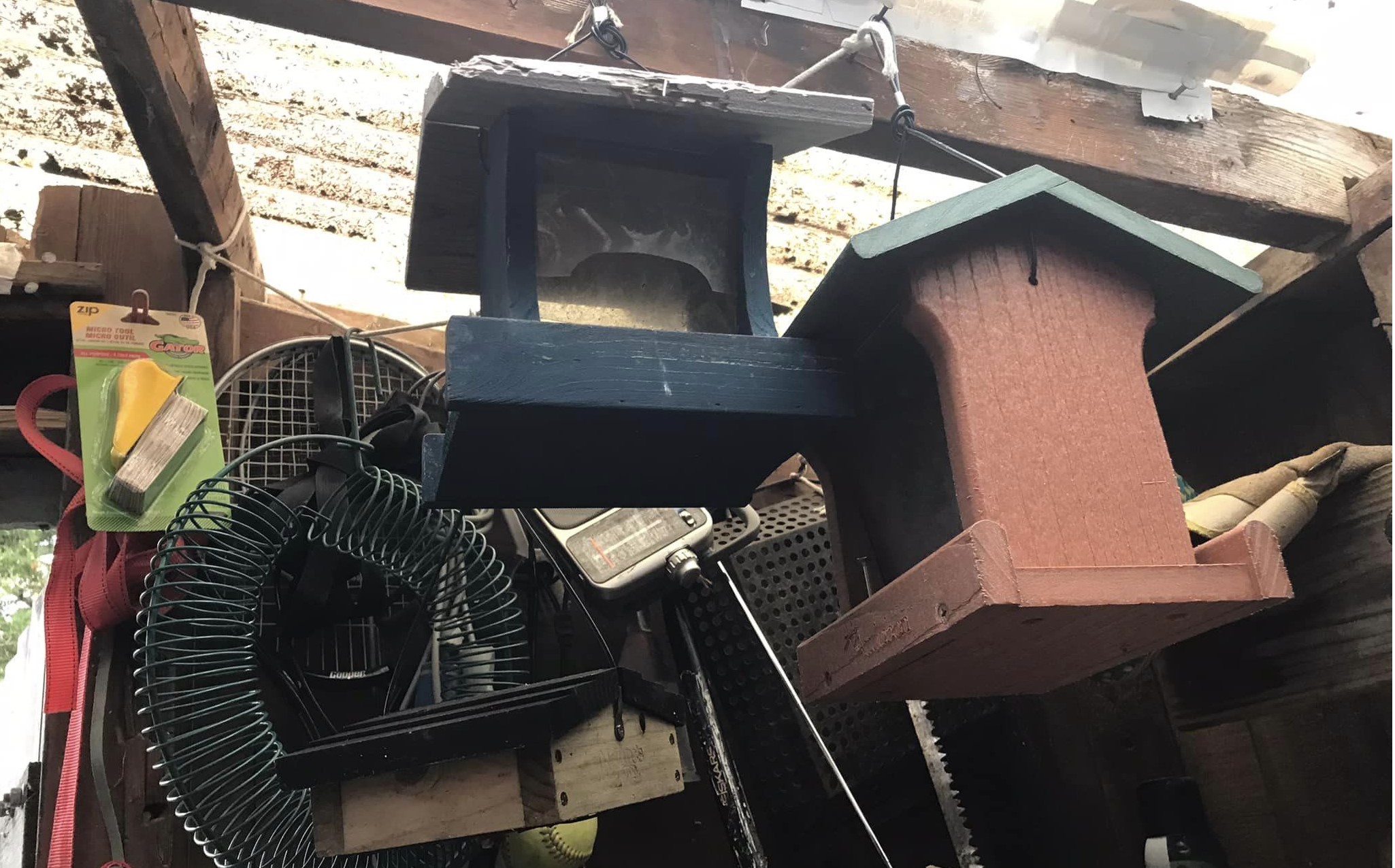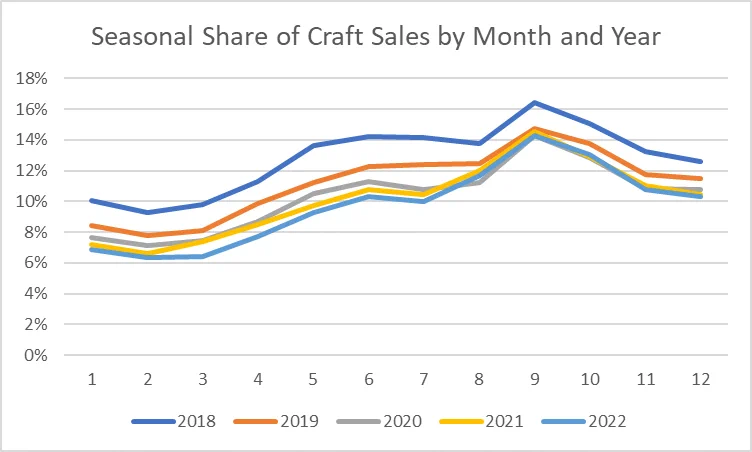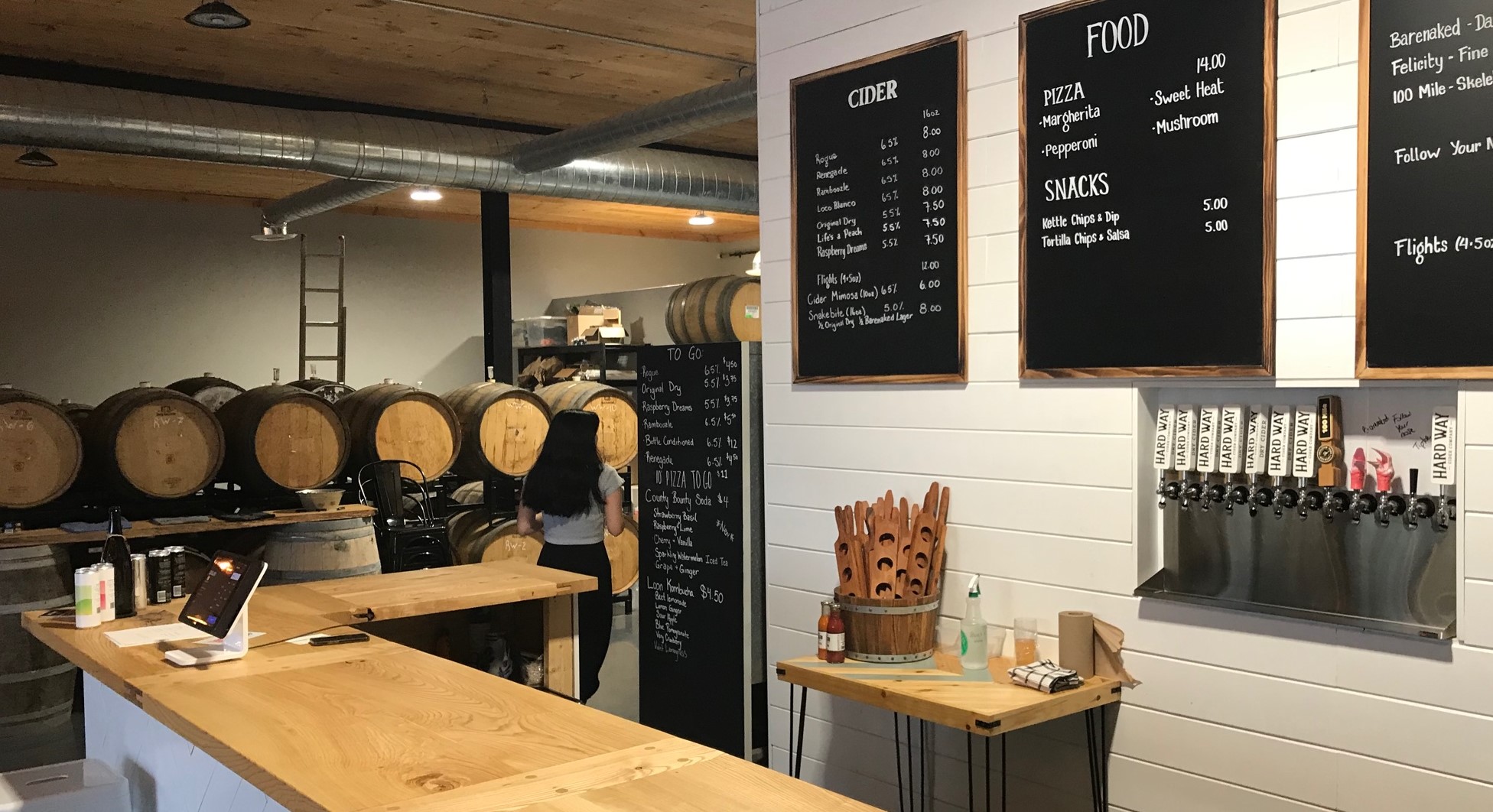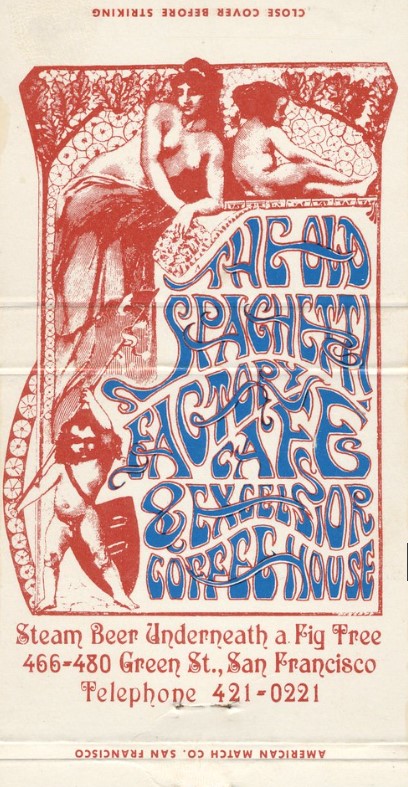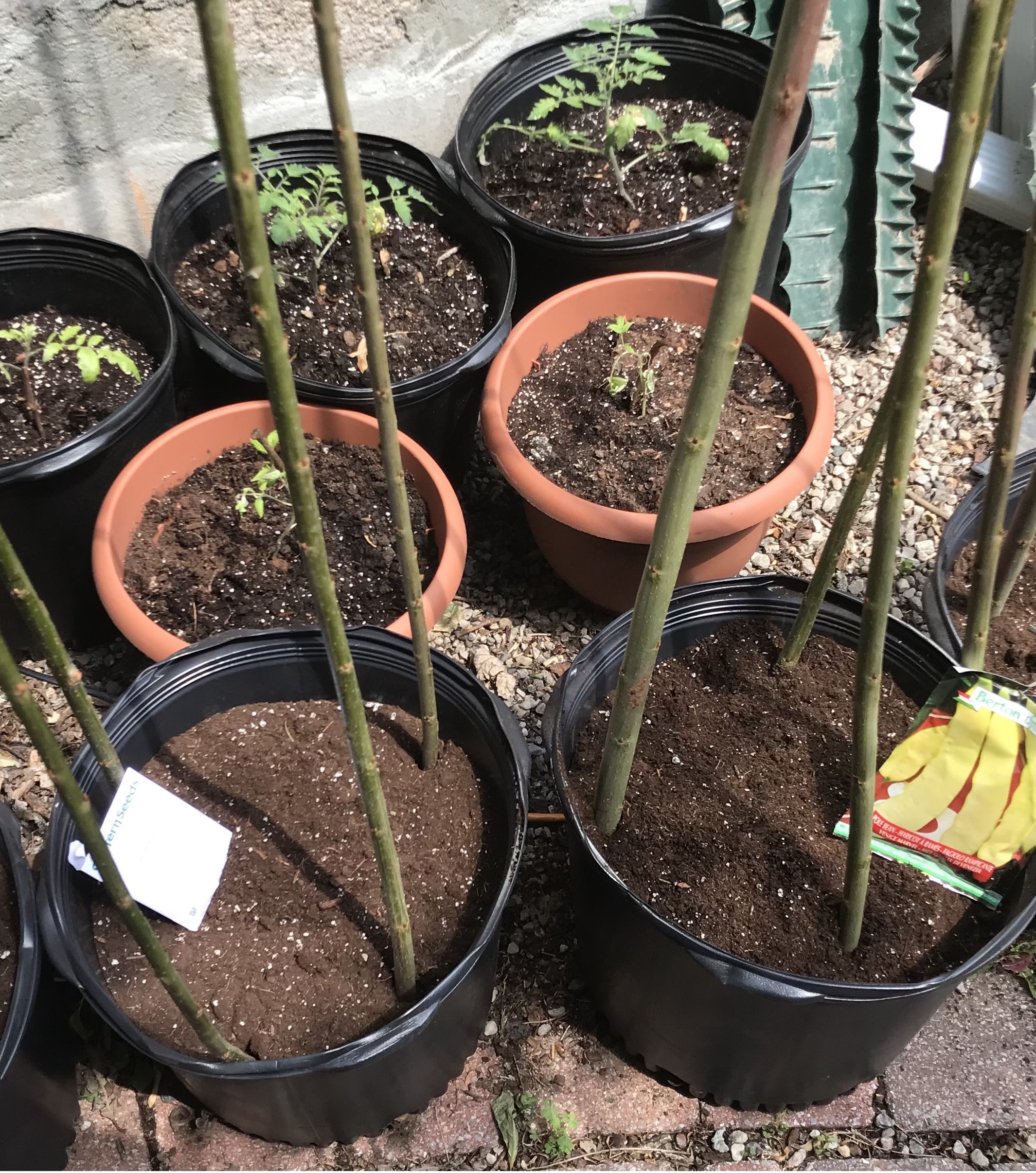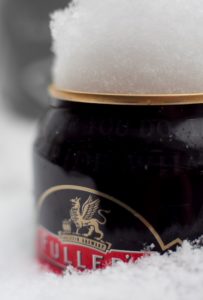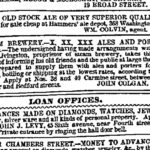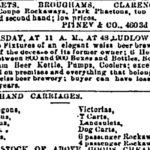Well, well, well. I entered the first day of my 62nd year today. No trauma. No big plans. Not like when you hit 25 or 40. Those were panicky birthdays. Feeling like middle age is coming too fast. Now that it is here… who cares? All one has to do is consider the alternative and sliding that bit closer to two-thirds of a century is mighty fine by me. Change is everything. Even the bird feeders are put away now. Winter is not coming. Not quite yet. So have one for me if you are having any at all. I’ll be the one gorging on cake.
First up, some very good news. In 2015, the world of good beer in California at least faced a stark reality – the water was running out. I noted that UC Davis had started a California Drought Watch program which includes considerations for the brewing industry. So it was good this week to read this update on the situation:
California’s water storage is at its healthiest levels in over a decade. Virtually every major reservoir in the state has average to above-average storage, with a substantial 115% of average snowpack still to melt. The last two years have been an amazing reprieve from the multiple brutal, record-breaking droughts that have plagued the state in the last decade.
What else? Hmm… Jeff wrote this in his last emailed weekend update : “It was a quiet week and I can’t think of much to say up…” Double hmm… and Boak and Bailey in their Patreon footnotes: “We were quite thrown by the lack of a substantial news story this week.” I can’t believe it! There’s gotta be something to read!!
Sorta breaking all the rules*, I see that Ron wrote a wonderful piece about the serial relationship he’s had with his locals… plural. They come and go but something has to come along with each if it is going to qualify. He’s currently on the hunt:
Last Saturday was or third time there. Not really giving me a local vibe yet. But that takes time to build. Harder to bear is the lack of draught Mild and Stout. Especially Headroom. A beer that took me closer to the 19th century with every sip. Weihenstapher Dunkles Weissbier is OK. But three of four pints is enough. And Checkpoint Charlie does sell korenwijn. Drinablke jenever. Not like the industrial cleaner called jonge jenever. The presence of a pool table and pinball machine mean Alexei is much more likely to come along. And reminded me of a previous local.
Katie also wrote about pubs this week in her newsletter The Gulp sharing her thoughts on children in pubs… like Ron’s kids… who grew up in pubs… I suppose:
…in my experience, the people who claim to hate children, and make a big deal out of this fact about themselves, are younger. They are around 20-35 years old, and they invariably claim to like dogs better. Of course, personal choice is absolutely valid. It shows that they prefer unconditional love. Who doesn’t? What I find distasteful is the absolute disdain for children and their existence anywhere near their personal space. It’s brutally Victorian. It’s outmoded. It’s—I’m going to say it—it’s selfish. Selfish in the true sense of the word, of only thinking of one’s self. The problem is, pubs are not made just for one individual’s comfort. They are places of socialisation and congregation…
(You know, I am not sure that personal choice is always valid… but then again I used to practice divorce law and criminal law. Bad choices exist. Really really bad one.) But back to Katie’s point which is entirely valid – if you teach kids that pubs aren’t for them, well, you will graduate cohorts of young adults who have learned that pubs aren’t for them.
Speaking of choices, the stats released by the BA on US craft beer’s 2023 seem to have been worked pretty hard to find a positive glint to focus upon:
The top-five craft players included, D. G. Yuengling & Son, Boston Beer Co., Sierra Nevada Company, Duvel Moortgat and Gambrinus, while the leading brewing companies included Anheuser-Busch Inc, Molson Coors, Constellation, Heineken and Pabst Brewing Company. Despite craft production decline in the US, the number of operating breweries in the craft space hit “an all time high”, up 1.37% on 2022 to 9,683. These breweries were comprised of 3,900 taproom breweries, 3,467 brewpubs, 2,071 microbreweries, and 245 regional craft breweries. Craft-brewery closure rates however increased again in 2023 from 3% to “approximately 4%”. The US saw 495 openings in 2023, a 9.8% dip on 2022, while closures increased 31% with 418 breweries shutting up shop.
Add to that the conglomerates and businesses focused on drinks other than actual beer, there is a lot of shaping going on. Closures up, openings down but the number of operating breweries in the craft space hit “an all time high”! Lordy.
David Jesudason shared a tale in his newsletter that he foreshadowed this way: “…despite the subject matter it’s quite amusing.” It’s the story of a charmless man:
He barred people for a lot of class-based reasons which seem bizarre today. One of his biggest annoyances were people who wore braces – calling them “hideous apparel worn by grubby people and are offensive to me and other customers”. In fact, a lot of the reasons for barring people were ridiculous, like in 1973 he threw out a group of drinkers for wearing nuclear disarmament badges. Tickell did, however, have no problem with rightwing political messaging and he proudly displayed two signs behind the bar – “Hands of Rhodesia” and “Keep the Falklands British”. He also gave speeches to local trade bodies – wearing a monocle around his neck and gold cufflinks – criticising customers who wanted chips with every meal and ate “deep freeze food and foreign-sounding fare”.
Braces!! The man knew nothing.** Then again, no one is useless – they can serve as a bad example.
And Jacob Smith wrote a bit of a semi-contrarian opinion piece for Pellicle this week suggesting that Britain’s community ownerd pubs are no answer in many cases:
In a 2022 report, the Plunkett Foundation, a charity which helps rural communities in Britain to create and run community-owned businesses, reported that only one in 12 rural community-owned pub projects reached trading status. That means 91.7% of all rural community ownership pub bids failed without ever pouring a pint. These failed bids are rarely, if ever, highlighted by mainstream media. And while it’s human nature to focus on the winners and allow the also-rans the dignity of anonymity, such blatant survivorship bias risks distorting our perception. If we’re not careful, soon everybody looks set to become the next Beyoncé.
I had questioned that this sort of use of “mainstream media”*** is a bit meaningless – and perhaps a manufactured strawman now that I think of it – given folk from Roger Protz to Boak and Bailey have also waived the “save the pub!” banner. Being involved with community organizations in a number of ways, it’s true many fail but we don’t need to look to big bad outside forces for why that occurs. As Jacob points out in parallel, locla factors like the involvement of difficult personalities can often but simply overwhelm the collective goal.
Sorta building on something I read about last year, I shared that story of how one building in San Francisco was capturing waste water which was passed to Devil’s Canyon Brewing Co in San Carlos California to brew a beer. In something of a closing of the bio-eco loop, this week we learned from Jessica Mason that researchers in Singapore have found a way to extract proteins from spent brewing mash for human consumption:
The researchers also said that the extraction method would also help mitigate a possible protein shortage due to a forecast 73% increase in meat consumption by the year 2050 which has been predicted by the Food and Agriculture Organisation of the UN to occur amidst the future rapid growth of the global population. The NTU researchers also revealed that the proteins extracted from the brewers’ spent grains were found to be rich in antioxidants, which could not only protect human skin from pollutants but could also potentially extend the shelf life of cosmetics and skincare products.
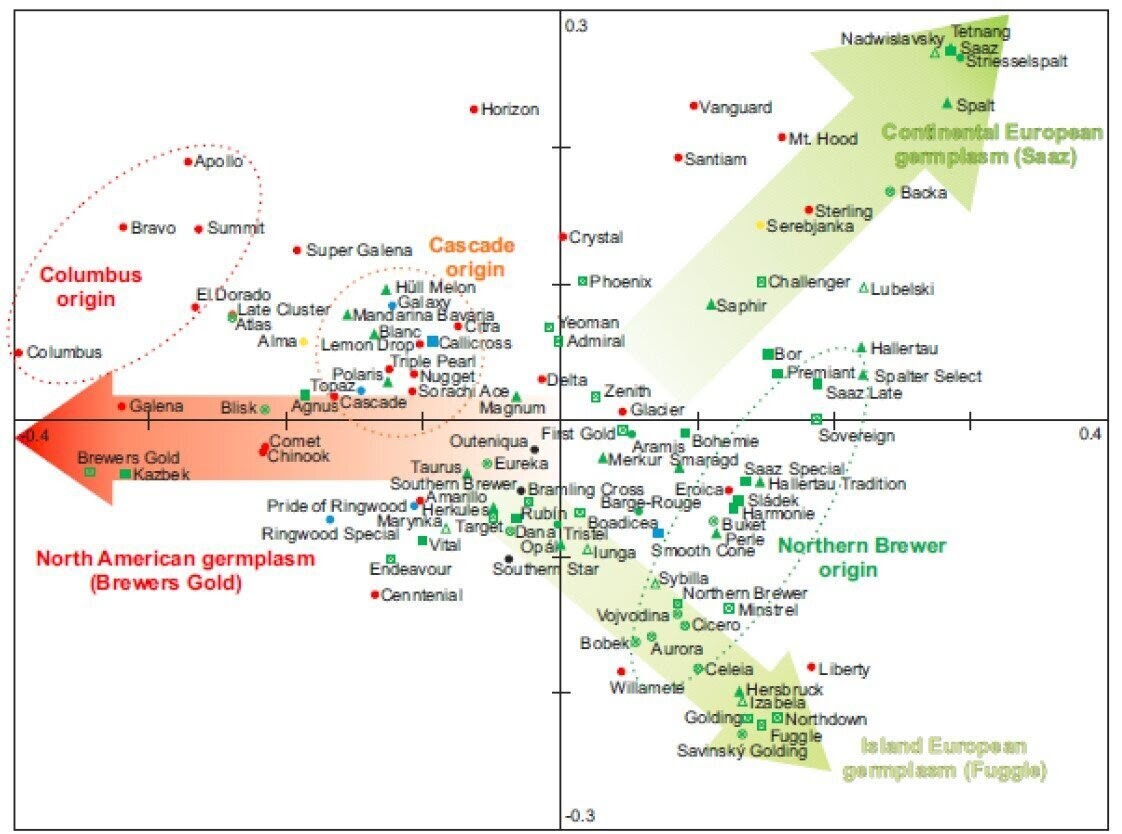 That is sorta cool. Stan may be on holiday this month, including a stop at the Craft Brewing Conference in Las Vegas, but I found his latest issue of Hop Queries waiting on the front stoop when I stepped outside with my cup of coffee last Saturday morning. It includes that chart to the right which is cunningly identified as “the second chart”:
That is sorta cool. Stan may be on holiday this month, including a stop at the Craft Brewing Conference in Las Vegas, but I found his latest issue of Hop Queries waiting on the front stoop when I stepped outside with my cup of coffee last Saturday morning. It includes that chart to the right which is cunningly identified as “the second chart”:
The second chart (clicking on it should enlarge it a bit)**** provides another way to look at genetic distancing. In this one (a two-dimensional principal coordinate analysis), the country of cultivar origin is represented by: Germany green triangle, Czech green square, UK green square with x, France green circle, Poland green triangle outlined, Slovenia green circle with x, Australia blue circle, New Zealand blue square, USA red circle, South Africa black circle. The research establishes the value of utilizing molecular genetic methods for “reliable cultivar identification or the evaluation of genetic variability and similarity by hierarchical cluster analysis and principal coordinate analysis.”
Do I understand every word? No. But one gets the point. There are, as Stan says, relationships that should be understood to be going back through cultivar to landrace to wild. Maybe.
Speaking of the CBC Vegas, Courtney Iseman in her latest Huggering the Bar shared some tips for attendees seeking a decent beer in a land known for other things:
If you can’t get off the Strip but want a craft beer, your best bet is honestly to grab a tall boy from a convenience store. You won’t find much selection at casinos and you’ll pay stadium prices, predictably. Not too far of a walk (more on this in a sec) is Ellis Island. This hotel + casino is one of the most depressing I’ve been to, but! Stay with me and persevere through the casino part to The Front Yard, a bar and restaurant nice enough to feel completely disjointed from the rest of the hotel. Ellis Island brews its own beer, and it’s pretty great, based on the lager and Berliner weisse (for which they have a few different syrups) we had. If you want lunch and good, affordable, local craft beer, you could do a lot worse.
I read a nice little vignette from Jason Wilson in Everyday Drinking, the story of a starting a small sleepy wine cellar to last until retirement from someone in South Jersey who is now 86:
Pierre acquired much of his collection at one liquor store in Cherry Hill, New Jersey, one that also sold cigarettes and lottery tickets. “I got lucky,” Pierre said. “ “When I first built my wine cellar, that’s when the 1982s were just coming out… you could still occasionally find a knowledgeable, passionate wine person in a standard-issue liquor store. “I was lucky that I had a guy,” Pierre said. “I used to subscribe to the Wine Spectator, and I had a wine encyclopedia. But the guy at my local store knew what was good.” The wines at this tasting had been cellared well. Pierre does not have a fancy, custom-made wine cellar. “It’s all natural, three sides dirt and one stone wall. When I built the house, it was going to be a crawl space, but I said, ‘No, no, let’s make it a wine cellar.’” He added: “I’ve never had a bad bottle that’s been stored there.”
Jeff wrote a bit of a tough personal piece on his family’s life with alcohol this week – which starts with a surprise:
“Let me see my little Susan!” Mom recalls saying. Before ultrasounds existed, predicting a baby’s sex was apparently a primitive exercise, and my mother’s doctor got it wrong. The nurse held me aloft, announcing instead the arrival of little “Johnny.” It hadn’t occurred to Mom to have a boy’s name at the ready, so for a week I was Baby Gorostiza. She has never been sure why she chose Jeff, and used to joke that with a bit more warning she’d have probably named me David.
One of my favorite stories in beer is the nice tale of an historic beer recreation that turns out to avoid the actual characteristics of the historic beer… like this:
Brewing beer from bread is not without its challenges. “Early beers probably were a little bit bitty and maybe like an alcoholic porridge,” Ziane says. The method took some adapting – including an industrial shredder to crumb the bread slices, and rice hulls to prevent the bread from becoming an impenetrable sponge in the tank. The recipe Toast settled on replaces 25% of the grain with bread. In doing so, it replaces 25% of the carbon, water and land needed to grow the grain.
Finally, in what is really a challenging footrace despite there being only one competitor there was news from ParksWatchScotland of one of the more pathetic results from a BrewDog self-promotion project… with the added twist of a waste of significant public funding:
In mid-February I described how many of the trees planted by BrewDog, as part of the Phase I creation of its Lost Forest, had died and how they appeared to be investing little, if any, of their own money in the whole disastrous project. A week after the post I received a response from Scottish Forestry to an information request I had submitted in December about the number of trees that had died, any related correspondence with BrewDog or their agents and the amount of forestry grant they had disbursed to date. The response stated Scottish Forestry had paid BrewDog £690,986.90 to date and confirmed that a very high proportion of the planted trees had died…
The anti-Midas touch, as usual. With that, again we roll the credits… well, the credits, the stats the recommends and the footnotes and the many ways to find good reading about beer and similar stuff via any number of social media and other forms of comms connections. This week’s update on my own emotional rankings? Facebook still in first (given especially as it is focused on my 300 closest friends and family) then we have BlueSky (up one to 127) rising up to maybe… probably… likely pass Mastodon (down one to 916) in value… then the seemingly doomed trashy Twex (4,467) hovering somewhere above or around my largely ignored Instagram (161), with sorta unexpectly crap Threads (43) and not at all unexpectedly bad Substack Notes (1) really dragging up the rear – and that deservedly dormant Patreon presence of mine just sitting there. Fear not!
Want to keep up with the news before next Thursday? Check out Boak and Bailey every Saturday and Stan the very next Monday upon which he decides to show up at the office. Look at me – I forgot to link to Lew’s podcast. Fixed. Get your emailed issue of Episodes of my Pub Life by this year’s model citizen David Jesudason on the odd Fridays. And Phil Mellows is at the BritishBeerBreaks. Once a month, Will Hawkes issues his London Beer City newsletter and do sign up for Katie’s now revitalised and wonderful newsletter, The Gulp, too. Ben’s Beer and Badword is back with all the sweary Mary he can think of! And check out the Atlantic Canada Beer Blog‘s weekly roundup. There is new reading at The Glass which is going back to being a blog in this weeks best medium as message news. Any more? Yes! Check to see the highly recommended Beer Ladies Podcast. That’s quite good. And the BOAS podcast for the bro-ly. And the long standing Beervana podcast . Plus We Are Beer People. The Boys Are From Märzen podcast appears suspended as does BeerEdge, too. But not Ontario’s own A Quick Beer. There is more from DaftAboutCraft‘s podcast, too. All About Beer has introduced a few podcasts… but some may be losing steam. And there’s also The Perfect Pour. Plus follow the venerable Full Pint podcast. And the Craft Beer Channel on Youtube. The Moon Under Water… is gone which is not surprising as the ask was $10 a month. Pete Brown’s costs a fifth of that but is writing for 47 readers over there. There was also the Beer O’clock Show but that was gone after a ten year run but returned renewed and here is the link! Errr… nope, it is gone again.
*Boak and Bailey had already noted this one which leads to consideration of this from the B+B footnotes last week: “(…on one unlinked story in the main article…) …certainly worth a read, especially if you have an emotional connection to Rhode Island. And Alan had already flagged it anyway, which is sometimes a consideration….” (…on another unlinked story in the main article…) “…the rest of the piece felt a bit like a sales pitch, as brewery profiles with access to the subjects can tend to do. And Alan had already flagged it anyway. Again.” This has been a heretofor an undiscussed phenomenon. I actually do like to not link on Wednesday evening to something that Boak and Bailey will no doubt mention Saturday morning. Reminds me of how when playing soccer or road hockey and I pathetically missed a pass sent my way – and then a teammate made more of the opportunity I ever could have… pals praising sarcastically with a “Well Left!!!” cheer.
**I unashamedly share my supplier, Albert Thurston. Seriously. Buy yourself a couple of sets along with a few buttons and you have enough for a lifetime. You spend more on a pair of boots. Maybe I’ll spend my birthday money and buy a fourth set… you are sending birthday money, right? Right?!?!??
***The word “media” appears eight times. Is no one else to blame? Is there even any need to blame?
****Sure did. Stan no lie.

